
































































































































































Edited by Mikkel Hyldebrandt


Smashby is stepping into new musical territory with his latest single, “First Rodeo,” a high-energy country-pop track all about letting loose and embracing the moment. Dropping April 4 via So Fierce Music, the song is a fun, feel-good anthem—exactly what Smashby hopes people need right now.
“I hope this song lifts people’s spirits,” he says. “The LGBTQ+ community is going through a really tough period right now, and we need some joy. ‘First Rodeo’ is just a fun bop to throw on our cowboy boots and have a dance party with our besties. Or alone— those are good dance parties too.”
Even though the song is lighthearted, Smashby admits that opening up to new people isn’t always easy. “In all honesty, there’s so much violence and anger towards people like me that I don’t really feel safe dating right now,” he shares. Still, the song was inspired by a friend who reminded him that not every guy has bad intentions. But romance? Not really on his mind at the moment. “I’m perfectly happy with lassoing a fun fling every now and then.”
As for his dream cowboy? He doesn’t hold back. “Leo Woodall from the Bridget Jones movie would be a fun time. Or Robert Irwin—he’s got golden retriever energy, which I love! And for actual cowboy vibes, Orville Peck—stunnerella! Oh, and my friend met Michael B. Jordan the other day, and I’m pretty jealous of that, so we’ll add him in there too.”
Musically, “First Rodeo” blends Smashby’s signature pop sound with country influences, making it perfect for honkytonks and line-dancing nights. He credits Miley Cyrus, Kacey Musgraves, Shania Twain,
and Dasha as key inspirations for the song’s sound and storytelling.
This single follows his track “Love Myself (How I Used to Love You)” and represents a new level of confidence in his artistry. “I think it shows me leaning into trusting my gut more—taking risks with production and creativity,” he says. “The song captures the energy my audience sees from me on stage.”
Co-written with Emmie Jay and Velvet Code and produced by Jon Cass and Velvet Code, the track came together effortlessly. “It was seamless—exactly how I intended from the start,” Smashby recalls. “It was just so natural to sing—this song really fits me like a glove.”
Smashby has never shied away from being himself, even when it wasn’t easy. Growing up, he dealt with relentless teasing from classmates. “To them, I was just the gay kid who wanted to be a star, and that wasn’t exactly the coolest thing in the 2000s/2010s,” he reflects. But coming out at 15 changed everything. “Once I came out, a lot of my insecurities started to disappear. I started to unlearn what had been projected onto me by society and finally got to start living within my own boundaries.”
With “First Rodeo,” Smashby is embracing his evolution while staying true to his core message—self-acceptance, resilience, and unapologetic joy. Whether it’s on the dance floor, at a honkytonk, or in the hearts of his fans, he’s proving that he’s just getting started.
“First Rodeo” drops April 4 on all major streaming platforms via So Fierce Music.

By Chris Azzopardi
Photos: Jeff Cottenden
What influence might artists like Chappell Roan, Billie Eilish and Kim Petras have on our world a decade from now? It’s a legitimate question that could offer hope in these fraught, uncertain times. As Roan challenges expectations by venturing into country music as a gay woman — an evolving genre historically associated with conservative values — she joins other boundary-pushing artists in reshaping cultural landscapes. And then there’s Lady Gaga’s new release, “Mayhem,” which serves as a powerful reminder of music’s ability to create cultural safe spaces. As The Independent recently wrote, “Gaga’s return to outsider-empowering form could not be more timely. At a moment when America’s leaders seek to shove its marginalized citizens back into the shadows, she invites them back into the centre of the floor, celebrating their defiant differences in the bright strobe lighting.”

In today’s climate, where antiLGBTQ+ rhetoric has found renewed prominence in political discourse since Trump’s return to office, Jon Savage’s insights become particularly relevant. The acclaimed British pop culture historian and journalist reminds us that fully comprehending our current circumstances requires us to examine the transformative musical movements that have helped shape LGBTQ+ history and progress. In other words, we need to listen closely to the revolutionary rhythms that will continue shaping the world around us. When it comes to Roan, Eilish, Gaga and Taylor Swift, Savage suggests a future that would involve more women in leadership roles beyond those in music: “I’m a great admirer. And I would also observe that what’s interesting compared to what it was back in my day is the fact that the cultural leaders are now young women, which I think is very interesting and very positive.”
For now, Savage’s new book, “The Secret Public: How Music Moved Queer Culture From the Margins to the Mainstream,” provides an important historical account of LGBTQ+ treatment and contributions to music — music, he says, often precedes and shapes cultural shifts, particularly for LGBTQ+ visibility and rights. The book succinctly describes itself as “a searching examination of the fortitude and resilience of the gay community through the lens of popular music and culture.”
“I think music is ahead of politics,” Savage told me recently. “So what does that mean? It means that music and popular culture can be an antiphony, particularly to oppressive power politics, and that’s why a lot of us love it and are involved because it’s things that you can’t say in the dominant culture, in the world of news, in the world of politics and in the world of, indeed, oppression.”
The term “antiphony” here refers to music and popular culture serving as a responsive counterpart to oppressive systems — creating alternative spaces for expression when mainstream channels are closed off. This concept of call-and-response between power structures and cultural resistance is central to Savage’s analysis of how LGBTQ+ communities have historically used music as both refuge and platform.
The book, spanning 769 pages, is more of a tome — as if to say, there’s no such thing as documenting too much. And now it ’s one, he says, that serves a greater purpose as the LGBTQ+ community and our history faces erasure due to the Trump administration. “I could not have seen that this would happen, that this would be the climate that the book comes out in,” he said, adding that its release is “an act of faith” on the part of his American publisher, Robert Weil, the executive editor and vice resident of the publishing imprint W. W. Norton / Liveright.
“ The Secret Public” covers a 24-year period, from 1955 to 1979, crucial years in LGBTQ+ history because it was the formalized beginning of a movement for gay men who began fighting for visibility, but, as Savage says, were “treated so badly.”
This period encompasses watershed moments like the Stonewall riots of 1969 and the emergence of openly gay public figures in entertainment and politics.
“A friend of mine said to me, which surprised me, ‘You know, you’ve written a very angry book,’ and I thought, well, actually, I probably have.”
Savage’s anger, perhaps, reflects the righteous indignation that often fuels social movements, particularly when documenting historical systematic oppression and the creative resistance that emerges in response.
“It is an angry book,” he admitted. “It’s obviously very pro-gay rights and also wishes to point out that LGBTQ+ people were treated appallingly at various parts in our recent history and still are, which is just absolutely unforgivable and still makes me very angry.”
Savage says that growing up in the 1960s and ’70s “was no picnic for me — the shit, really, to be honest.” Fiery emotions, then, seem only natural. But, at the same time, he notes the contradiction that “you had all these fabulous people having incredibly cool self-esteem, which played out by hating themselves because they were gay or becoming alcoholics, just because of stupid prejudice — and that made me absolutely mad.”
Savage’s book opens in November 1955 with Little Richard, who came out and then went back into the closet after becoming a bornagain Christian. Savage writes that Richard’s “very appearance and sound made sex and gender difference part of the pop package.” It goes on to explore Elvis Presley, who took a page out of Richard’s book with his seductive hip gyrations during a time when it was “open season on homosexuals, sex deviates and all those who did not cleave to narrow definitions of normality.”
In the early ’60s, Savage, who says he prefers his pop music in any era to be less ordinary and, instead, “fifth gender from outer space,” found himself deeply immersed in a world that felt both electrifying and liberating. He was captivated by young male musicians with long hair — “looking quite feminine,” he notes — as the British music scene underwent a seismic transformation in 1963, when The Beatles took the country by storm, followed by the Rolling Stones later that year. By 1964, long-haired groups were appearing across the U.K., each one pushing boundaries and challenging the status quo. This cultural explosion mirrored a broader sense of change, as the country saw a gradual but significant shift in attitudes and norms, one Savage calls a “big deal.”
A pivotal moment came in 1967 when homosexuality was partially decriminalized in the U.K., a landmark achievement after years of hard-fought activism. The progress had taken over a decade of agitation, but it marked a tangible victory. Savage saw a deeper connection between the music scene and this legal shift. Many of the long-haired, boundary-pushing groups were led by gay managers, he says, whose influence behind the scenes quietly permeated the music and the cultural sensibility of the time. It wasn’ t just about the sounds or the fashion; it was a reflection of an undercurrent of change that helped shape public attitudes.
“People are going to take from it what they want. There’s a lot of material in there,” he said. “I’ ve researched it. It hangs together, and it gives this picture where, really, a lot of the people in the book were just very brave.” For Savage, this rebellion wasn’ t just about youth or rock ‘n’ roll; it was a battle for human dignity, an effort to open up the conversation about LGBTQ+ rights in ways that hadn’ t been done before.
For Savage, the inclusion of David Bowie, a key figure in his narrative, exemplified that kind of bravery. “You know, I include David Bowie in that,” he said, almost as an afterthought, as though his presence in the story was both inevitable and significant. “Bowie has been criticized. But honestly, let me tell you, in the U.K., that was a huge thing for a lot of young LGBTQ+ people. And the gay press of the time really saw him as somebody who’d really also opened the door and was incredibly helpful.”
“It was a mixture of both sincerity and calculation,” he added, noting that Bowie had never been entirely transparent about his bisexuality, but his willingness to embrace the possibility in the public sphere made a difference. As we consider the influence of artists like Roan and Petras, Savage’s assessment of Bowie’s legacy offers a compelling framework: “ You judge actions by results,” he concluded.
Chris Azzopardi is the Editorial Director of Pride Source Media Group and Q Syndicate, the national LGBTQ+ wire service. He has interviewed a multitude of superstars, including Cher, Meryl Streep, Mariah Carey and Beyoncé. His work has also appeared in The New York Times, Vanity Fair, GQ and Billboard. Reach him via Twitter @chrisazzopardi.








Edited by Mikkel Hyldebrandt



As the days get longer and the temperatures rise, spring offers the perfect opportunity to refresh your mental health. After months of winter hibernation, it’s time to step outside, soak up some sun, and reconnect with the world. The season naturally encourages movement, social interaction, and a renewed sense of purpose—key ingredients for mental well-being. Here are some ways to harness the power of spring to improve your mental health.
Sunlight is a natural mood booster, helping your body produce vitamin D and serotonin, both of which can enhance your mood and energy levels. Exposure to sunlight also helps regulate your sleep-wake cycle, making it easier to wake up feeling refreshed. How to get started: Begin your day with a short morning walk or enjoy your coffee outside. Aim for at least 15-30 minutes of sunlight exposure daily.
Physical activity releases endorphins, which are known to reduce stress and anxiety. Spring’s mild weather makes it an ideal time to get outside and exercise. How to get started: Swap the treadmill for an outdoor jog, bike ride, or even a leisurely walk around your neighborhood or local park.
Humans are social creatures, and connecting with others is vital for mental health. Warmer weather makes it easier to meet up with friends and family, whether for a picnic, outdoor coffee date, or group activity. How to get started: Plan a simple outdoor gathering, like a weekend brunch in a park or a game night on a patio.
Spring cleaning isn’t just about tidying up—it can also do wonders for your mental clarity. A cluttered space can contribute to stress and anxiety, while an organized environment can foster a sense of calm. How to get started: Start with one small area, like your desk or closet, and dedicate just 10-15 minutes a day to decluttering.
Spending time in nature has been shown to lower stress, improve mood, and even enhance cognitive function. Whether it’s hiking, gardening, or simply sitting under a tree, nature has a calming effect on the mind. How to get started: Make it a goal to visit a park, botanical garden, or hiking trail at least once a week.
Mindfulness helps you stay present and appreciate the beauty of the season. Spring is full of sensory experiences—flowers blooming, birds chirping, the warmth of the sun—that can help ground you in the moment. How to get started: Try a five-minute mindful breathing exercise outdoors, focusing on what you see, hear, and feel.
Spring is a season of renewal, making it a great time to set new personal or professional goals. Whether it’s picking up a new hobby, improving work-life balance, or focusing on self-care, setting small, achievable goals can boost motivation and mental well-being. How to get started: Write down one goal for the season and break it into actionable steps.
By embracing the energy of spring, you can refresh your mind, body, and spirit. Take advantage of the longer days and brighter skies to create a routine that supports your mental health. A little sunshine, movement, and social connection can go a long way in helping you feel your best this season!






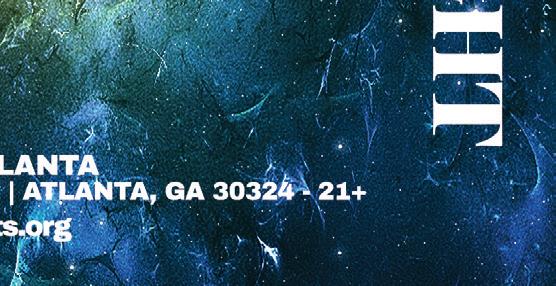




















eatu he Divas of Lips










































































ring the magic of Lips Celebrit y Imperso ed esd , April 30 2


















































































































































































































































BARS & CLUBS MIDTOWN
BLAKE’S ON THE PARK blakesontheparkatlanta.com 227 10th St NE
BULLDOGS 893 Peachtree St NE
FRIENDS NEIGHBORHOOD BAR friendsonponce-atl.com 736 Ponce De Leon Ave NE
MY SISTER’S ROOM mysistersroom.com 66 12th St NE
X MIDTOWN xmidtown.com 990 Piedmont Ave NE
THE T modeltatlanta.com 465 Boulevard SE
CHESHIRE
HERETIC hereticatlanta.com 2069 Cheshire Bridge Road
BJ ROOSTERS bjroosters.com 2043 Cheshire Bridge Road NE
WESTSIDE
MARQUETTE 868 Joseph E. Boone Blvd NW
840ATL
840 Ralph David Abernathy Blvd
ATLANTA EAGLE 1492 Piedmont Ave NE
FELIX’S 1510 Piedmont Ave NE
THE HIDEAWAY 1544 Piedmont Ave NE
MIXX mixxatlanta.com 1492 Piedmont Ave NE
OSCAR’S oscarsatlanta.com 1510 Piedmont Ave NE WOOFS woofsatlanta.com 494 Plasters Ave NE
TRIPPS fb: tripps-bar 1931 Piedmont Cir NE
EAST ATLANTA, GRANT PARK & EDGEWOOD
MARY’S marysatlanta.com 1287 Glenwood Ave SE
SISTER LOUISA’S CHURCH sisterlouisaschurch. com 466 Edgewood Ave SE
LORE ATLANTA loreatl.com 466 Edgewood Ave loreatl.com
DINING
MIDTOWN
CASA ALMENARA 991 Piedmont Ave NE casa-almenara.com
OLIVE BISTRO olivebistro.com 1050 Juniper St NE #4
LA HACIENDA lahaciendamidtown. com
900 Monroe Dr NE
TUK TUK THAI FOOD LOFT TUKTUKATL.COM 1745 Peachtree Rd NW
DEKALB
LIPS ATLANTA atldragshow.com 3011 Buford Hwy NE
RETAIL
MIDTOWN
BOY NEXT DOOR MENSWEAR boynextdoormenswear.com 1000 Piedmont Ave NE, Ste A
ANSLEY
BARKING LEATHER AFTER DARK barkingleather.com 1510 Piedmont Ave NE
GCB & PLEASURES brushstrokesatlanta. com
1510-D Piedmont Ave. NE
FITNESS MIDTOWN
URBAN BODY FITNESS urbanbody tness. com
500 Amsterdam Ave N
CHESHIRE GRAVITEE FITNESS graviteeatl.com 2201 Faulkner Rd NE
SPAS/BATHS ADULT
FLEX SPA exspas.com 76 4th St NW SOUTHERN NIGHTS
2205 Cheshire Bridge Rd NE











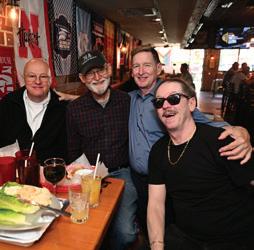









































































































































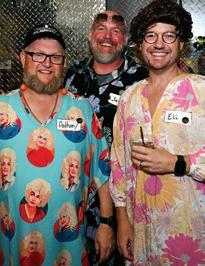





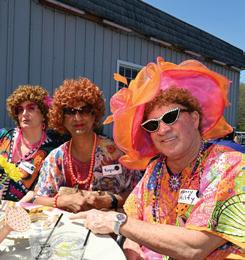



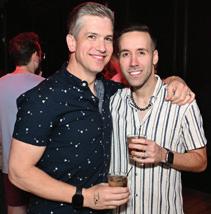


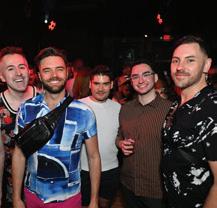


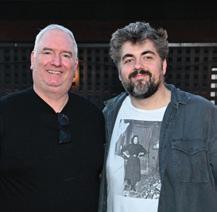















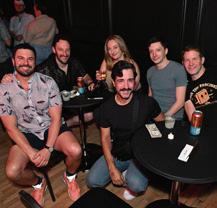




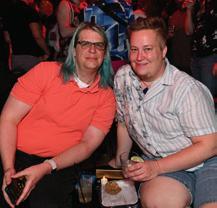
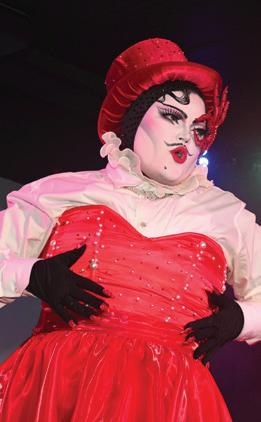




































































































































































EASTER BONNET CONTEST - EASTER EGG HUNT - MUSICAL C




HAIRS - EASTER DRAG RACES
SNAP YOUR WEINER - BINGO - BANANA RING TOSS - PLINK
O - AND MUCH MORE!
FORTUNE TELLER - DUNK TANK - FACE PAINTING - EGG DY
EING - MUGSHOT PHOTO BOOTH
BURGERS - HOTDOGS - COTTON CANDY - SNOW CONES - POP
CORN - JELLO SHOTS




We all have those moments of ‘wait, did they just say that?’ Lucky for you, we compile the best of the best right here on this page. Want to join in on the b*tch session? Submit your own nuggets to info@davidatlanta.com.





Bed doesn’t ask questions. Bed doesn’t judge. Bed is always there for you. Bed is nice.
I don’t have a good pickup line, but I can pick you up, and we can do lines.

I either blow $800 in two days or stretch $2 for 4 weeks. No in-betweens.
This, too shall pass… But like when?!
You know what’s red and bad for your teeth? A brick, so stop playing with me!

I think God is testing me. And I didnʼt study!


But it was assigned the Gulf of Mexico at birth!



I need maycation. I may come back, I may not.




